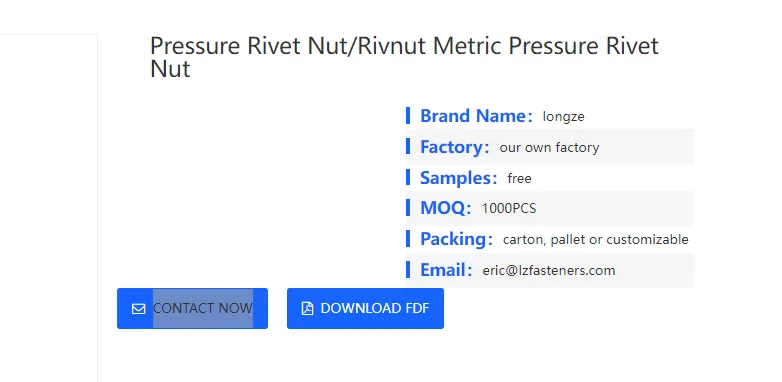

Hex Flange Lock Nut Types and Applications for Secure Fastening Solutions
ธ.ค. . 10, 2024 23:36 Back to list
Hex Flange Lock Nut Types and Applications for Secure Fastening Solutions
Understanding Hex Flange Lock Nuts Design, Benefits, and Applications
In the world of fasteners, hex flange lock nuts have carved a niche for themselves due to their unique design and versatile applications. The hex flange lock nut combines the traditional hexagonal shape with an integrated flange and locking features, making it a reliable choice for various industrial and construction applications. This article delves into the design aspects, benefits, and practical uses of hex flange lock nuts, illustrating why they are a preferred choice for many engineers and builders.
Design Features
Hex flange lock nuts are characterized by their hexagonal shape, which allows for easy installation and tightening using standard tools. The flange refers to the integrated washer-like component that extends from the nut’s base. This flange not only provides additional bearing surface against the application material but also helps distribute the load over a larger area, reducing the risk of damage to the mating surface.
One of the standout features of these nuts is their locking mechanism. Many hex flange lock nuts come with serrations or ridges on the underside of the flange. When tightened, these serrations engage with the surface of the assembly, creating a secure grip that resists loosening due to vibrations or dynamic loads. This self-locking capability is particularly valuable in applications where traditional nuts might fail under stress.
Benefits of Hex Flange Lock Nuts
1. Vibration Resistance One of the primary advantages of hex flange lock nuts is their ability to resist loosening caused by vibrations. In high-vibration environments such as automotive, aerospace, and heavy machinery applications, these nuts provide peace of mind, ensuring that the assembly remains tight and secure.
2. Ease of Installation The hexagonal shape allows for straightforward installation with standard wrenches, requiring less time and effort than some other specialized locking nuts. The integrated flange eliminates the need for additional washers, streamlining assembly processes.
3. Load Distribution The flange design helps distribute the load more evenly across the surface, minimizing the risk of deformation or damage to the components being fastened. This is particularly beneficial in softer materials that might otherwise be damaged by traditional nuts.
hex flange lock nut

4. Corrosion Resistance Options Many hex flange lock nuts are available in various materials and coatings, such as zinc plating, stainless steel, or nylon insert variants. These options enhance their resistance to corrosion and wear, making them suitable for outdoor or harsh environment applications.
5. Versatile Applications Due to their unique features, hex flange lock nuts find application in a wide range of industries, including automotive, construction, manufacturing, and electronics. Their versatility makes them an essential component in many assembly processes.
Applications
Hex flange lock nuts are prevalent in various applications. In the automotive industry, they are used to secure components such as exhaust systems, transmission mounts, and suspension parts. The vibration-resistant properties are critical here, as vehicles experience constant movement and shocks.
In construction, these nuts are employed to secure structural elements like steel frames and machinery. The load distribution feature helps in maintaining the integrity of the structures over time, especially when exposed to varying weather conditions.
Manufacturing processes that involve machinery often use hex flange lock nuts to ensure that components remain securely fastened during operation. Additionally, in the electronics field, they are utilized to secure cases and covers, ensuring the safety and functionality of devices.
Conclusion
Hex flange lock nuts have proven to be indispensable fasteners in various industries due to their robust design and performance characteristics. Their ability to resist loosening caused by vibrations, ease of installation, and effective load distribution makes them a reliable choice for engineers and builders alike. As technology advances and industries evolve, the need for effective fastening solutions will continue to grow, and hex flange lock nuts are poised to remain a critical component of secure, reliable assemblies. Whether in automotive applications, construction, or machinery, these nuts ensure that components stay tightly secured, enhancing safety and performance across the board.
Latest news
-
Premium Fasteners Manufacturer | AI-Driven Solutions
NewsAug.01,2025
-
Hot Dip Galvanized Bolts - Hebei Longze | High Strength, Corrosion Resistance
NewsAug.01,2025
-
High-Strength Hot Dip Galvanized Bolts - LongZe | Corrosion Resistance, Custom Sizes
NewsAug.01,2025
-
Best Self Tapping Screws for Drywall - Fast & Secure Installation
NewsJul.31,2025
-
High-Strength Hot Dip Galvanized Bolts-Hebei Longze|Corrosion Resistance&Customization
NewsJul.31,2025
-
Hot Dip Galvanized Bolts-Hebei Longze Metal Products|Corrosion Resistance&High Strength
NewsJul.31,2025

